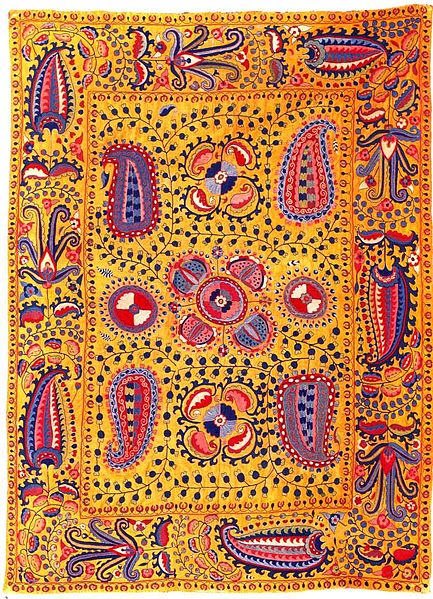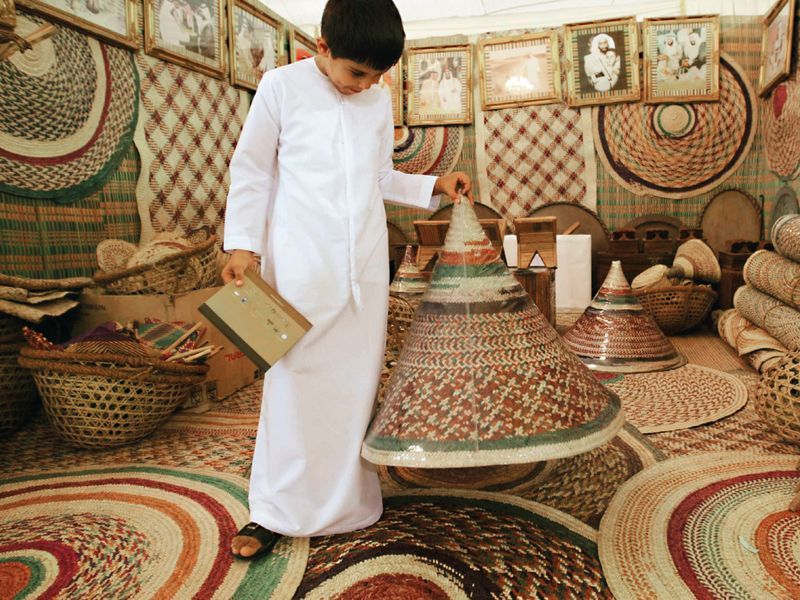INTRODUCTION
Imagine yourself in a beautiful piece of land in between a river with sound of birds perching on it’s banks ,whispers of gentle breeze brushing past the leaves of trees ,serene and calmness spread all around ,these magical words are a dream for any nature lover, a gentle soft soul who craves for a simple life out side of his/her bubble of city life .

This world is full of such amazing places ,if only our minds ,eyes and heart could see, sense and feel it .
Welcome to Iraq’s Garden of Eden ,unique wetlands in Southern Iraq where people known as Ma’dan (Arabs of the Marsh ) have lived for centuries .
Iraqi marshlands also known as Mesopotamian marshlands are the largest wetland eco system in the Middle East ,they cover South -western Iraq ,South- western Iran as well as parts of North Kuwait .These Mesopotamian marshlands historically cover over 20,000square kilometers of inter connected mudflats, lakes and wetlands .
GARDEN OF EDEN
Mesopotamia means ,the land between the rivers ,the two rivers are the Tigris and Euphrates, within the confluence lay vast marshlands with lakes ,channels ,river islands and ,forests
Biblical scholars regard the Marshes as the site of legendary Garden of Eden .Situated in Southern Iraq ,the marsh is located at the meeting point of the Tigris and Euphrates Rivers and their confluence ,the waterway is called Shatt al Arab .
Since 2016, Mesopotamian Marshes have been listed as UN Heritage Site .
The moist fertile delta where the two rivers meet is larger than Everglades, Florida (USA ) and roughly equal in area to Massachusetts .This unique eco system has been supporting a unique human civilization and culture for past 7000 years .
LAND OF THE MARSHES
The first literate societies emerged in Southern Mesopotamia which nurtured Sumerian culture and civilization ,who produced the first alphabet and earliest epics which is why it is often referred to as the Cradle of Civilisation .

Parts are permanent marsh ,others seasonal providing habitats for several Marsh Arab tribes and variety of plants and animal species . Marsh people up until 1950’s lived in isolation from rest of the world and could preserve their unique way of life .
MA’DAN TRIBES
Mesopotamian Marshlands are aquatic landscape historically inhabited by the Marsh Arabs also known as the Mad’an which is a collective word for various tribes and clans that live in the waterlogged area .
Ma’dan loosely means plains dwellers and commonly known as Marsh Arabs in English .
Majority of Ma’dan Arabs are Twelver Shia Muslims or Itna Ashari .Many families claim to be descendant of Prophet Muhammad and dye their Kuffiye green .
Ma’dan culture is largely influenced by the Beduoin culture of the desert ,only difference that it’s been adapted for life in the watery marshes .
OCCUPATION
These tribes make a living by fishing ,farming and breeding lifestocks.
The Marsh Arabs domesticate ,water buffalo which provides them with milk ,yoghurt, leather and dung for fuel.
USE OF REEDS
MARSH -CANOE
The Mashoof or Mashuf is a long narrow canoe used by Marsh Arabs ,which is used for fishing and for transportation. This Marsh Canoe is made of different materials like reeds ,papyrus and trees grown locally ,the Marsh Arabs use the Mashuf to gather giant reeds for house building .
Canoes laden with reeds ,men paddle home
HOUSES
Reeds grow everywhere in the marshes and is considered cheapest building material .The beautiful elaborated floating houses of the Marsh Arabs are made entirely of reeds harvested from open water . Arab Marsh lands cover 6,000sq miles of reedbeds ,lakes ,bulrushes ,canals and sedge .

Reed can be used for building houses ,boats ,crops ,writing implements ,paper as well as musical instruments etc .Many domestic necessaties such as beds, cots, baskets and canoe poles are woven from reeds .
Types of Reed Dwellings
Several types of Reed houses are used by the Marsh Arabs which are smaller and less dramatic ,these beautifully elaborated floating houses are made entirely of reeds harvested from open water of the Iraqi Marshlands .

Bayt is a single room dwelling used either as residences or storage ,Raba is maller and less dramatic ,Sariya is the smallest reed house used by the Marsh Arabs while Mudhif is a traditional guest house used for the tribes .
Reed houses last over 25 years .Floating houses made entirely of reeds can be built under 3 days depending upon the size of the structure .
These architectural wonders rest on small islands built with compacted mud and rushes .

Ma’dan live in secluded villages of elaborate reed houses throughout the Marshes ,which often can only be reached by boats ,or Mashuf (Marsh canoe )
Houses built on reed has advantage of being portable and can be easily disassembled ,moved onto higher grounds and rebuilt if the waters rise up in the Marshlands.
The Ma’dan villages are sometimes built directly on platforms or small islands built with compacted mud and rushes with alternate layers of reed mats or reed slits .

A number of small villages exist alongside the marshes ,each containing homes of either the Ma’dan or Beni Hasan most Marsh Arabs belong to the Shia community especially the Twelver or Itna Ashari .Till 1980’s half million Arabs lived in the Marshes .

MUDHIF (The Guest house )
A Mudhif is a type of a Reed House in the swamps of Southern Iraq. It is built using technique that dates back to the Sumerians almost 7,000 years old .
Mudhif architecture has roots in culture of Marsh Arabs .
This traditional building is entirely built from reeds and a special type of grass called Qasab which is a bamboo type of grass that can reach upto 7 1/2 metres or 25 feet tall .

In short Mudhif is a 30 foot high Community House made entirely of reeds ,this architectural wonder is built quick and fast without the use of nails, wood or glass .
DESIGN,USE and CONSTRUCTION
Mudhif (Guest House ) is entirely are made of giant Reeds, which are harvested ,sorted and collected from open water of the Iraqi Marshlands .
It’s design is traditional ,yet communal where the Sheikh leader or a family can decide on the number of pillars to be used in the Mudhif ,usually odd number of reed pillars are used in the construction and the direction of the entrance is always facing Makkah (Saudi Arabia).
The large burrel vaulted have citing sides and reed lattice panels for letting the sunlight and airflow into the dome shaped building thereby keeping temperatures bearable in hot humid summers .

USE
Made entirely of interlocking reed grass the Mudhif is a traditional Reed House made by Ma’dan people in the swaps of Southern Iraq which is used as a ,Political, Social ,Judicial and Religious Centre .
It serves as guest house for the ocassional traveller ,where no payment is accepted for lodging and meals of the visitors ,locals stay and spend time together and guests are offered traditional hospitality .

Series of dozen evenly shaped Cathedral like arches are tightly woven from reefs supporting a curved roof ,oriental carpets blanket the floor.
Mudhif is a pride of every tribe,and it’s barrel vaulted ceilings are a symbol of inheritence ,history and identity of their unique culture .

Furnishings in a Mudhif are sparse where the floors are covered with carpets and there is clay hearth for making coffee and baking bread waiting to be used for weary travellers and visitors .
In short ,Mudhif is a Public Hall where tribes gather together for community ,ceremonies (weddings ,funerals etc) and general meetings .

ECO – CONSTRUCTION
A Mudhif needs to be refurbished after 7 years and rebuilt completely every 15 years .Constructing a Mudhif is a a low cost ,economical and sustainable project .

There is a painkstaking hard work involved in the construction of a Mudhif ,reeds are plucked from the marshes and there are 12 stages of construction of the reed house .It takes time and effort from transport ,sorting ,weaving reeds , and from preparation to furnishing until the whole construction is ready to be used .

Depending upon the size ,it can take a week to 50 days to construct a Mudhif .
The Mudhif is heat insulated as well as biodegradable and recycled .Once the Mudhif has served their purpose it can be used as an animal feed or as fiber binder for mud cakes .
In short it is an Environment Friendly Construction built in harmony with nature.
CHRONICLES OF MARSH LANDS
Wilfred Patrick Thesiger (1910-2003),a British military officer, explorer and travel writer is probably the last western writer to have seen and lived amongst the Marsh Arabs from (1951-58) ,recording day to day life in various regions of the Marshlands .

Photo credit : Amazon India
He chronicled his experience in the book, The Marsh Arabs ,which was published in 1964 which later became a Classic .This book is available in online format as well .
ENVIRONMENTAL REFUGEES

PARADISE LOST
Since the British led modernisation schemes of Iraq in the 1950’s, the Marsh Arab ,their habitat and fragile eco system has been greatly threatened and damaged .
During the 1990’s Saddam Hussain launched a vast punitive assault that burned and poisoned the reed beds .He built a system of locks ,dykes ,embankments and canals that turned wetlands into a dust bowl.

CLIMATE CHANGE and POLLUTION
Since early 1990’s constant draining of Marshlands with rampant construction of dams over the Tigris and Euphrates rivers ,warfare ,droughts,climate change and pollution have radically altered the environment of Marsh Arabs that in 1994 ,nearly 90 percent swamps in which the Marsh Arabs lived were destroyed ,which doomed the eco system and displaced many from the marshes ,UNHCR provided a case study of the displacement of Marsh Arabs and labelled it as an ,’Environmental Disaster ‘.
An estimated 250,000 Ma’dan people were killed or forced to flee the Marshes and were internally displaced making them refugees throughout Iraq and in neighboring Iran .Many endangered animal,fish and bird species were also deprived of their natural habitat .
RESTORATION
Marshlands of Iraq defined as the Garden of Eden ,bear traces of regions bitter history where the biodiversity of the region has been greatly damaged and come to brink of extinction.
EDEN AGAIN
In 2001 by Dr.Azzam Alwash and his wife Suzie founded Eden Again an NGO that plans revival of the swamp marshlands .They work closely with the Iraqi Ministry of Water Resources and goal is to restore Iraqi Marshlands that have turned into Desert of more than 20,000 square kilometers.

Photo credit : Eden in Iraq
The Iraq Foundation sponsored the creation of the Eden Again project in 2003 ,this project continues as part of Nature Iraq (a separate environment Iraqi NGO and remains significance for it’s human ,environment and historical impact) .
NATURE IRAQ
Nature Iraq is an NGO run by an American -Iraqi hydraulic engineer who left life in California to improve ,study and provide financial support from USA,Canada,Japan and Italy for improvement and sustain Marsh Arab culture and community. It is accredited to UNEP (United Nations Environmental Programme ).
These Non-Governmental Organisations (NGO’s) along with other governmental schemes have played a key role in restoring the flyway of migratory birds ,support endangered species and sustain fisheries of the Persian Gulf .
They work together to prevent salt-water intrusion into Shatt al -Arab ,high soil salinity in Marshes and adjecent areas deprive Iraq of much needed agricultural land .
CONCLUSION

Despite all efforts the exotic lifestyle has gradually disappeared from the ancient Mesopotamian Marshes ,nevertheless the Marsh Arabs remain one of Iraq’s most underserved population struggling to obtain healthcare ,clean drinking water and adequate nutrition .
The Garden of Eden like the rest of the cultural world waits to rise again like a Pheonix
because……..








.jpg?$p=6d23c6a&f=16x10&w=852&q=0.8)























































































































































































